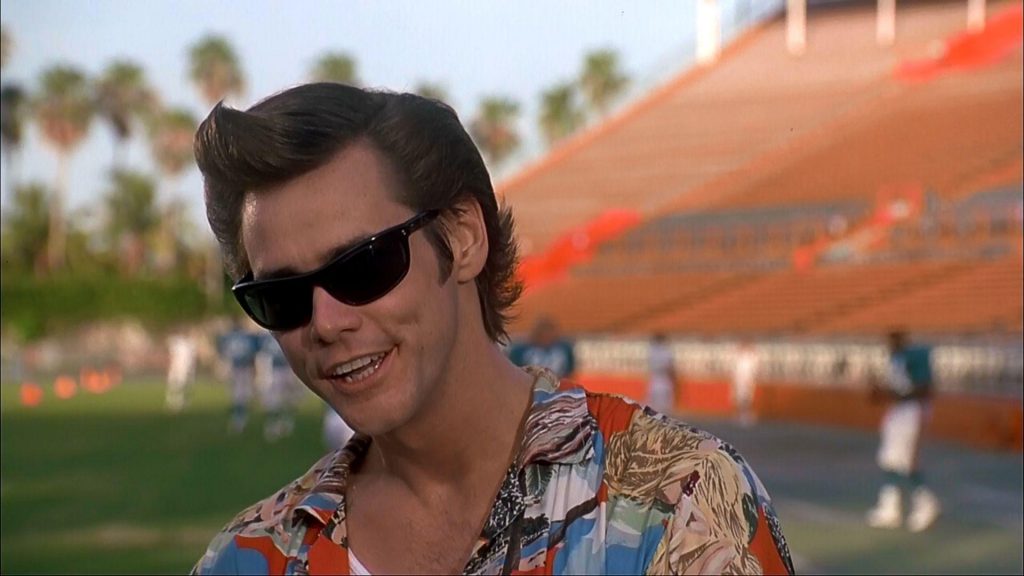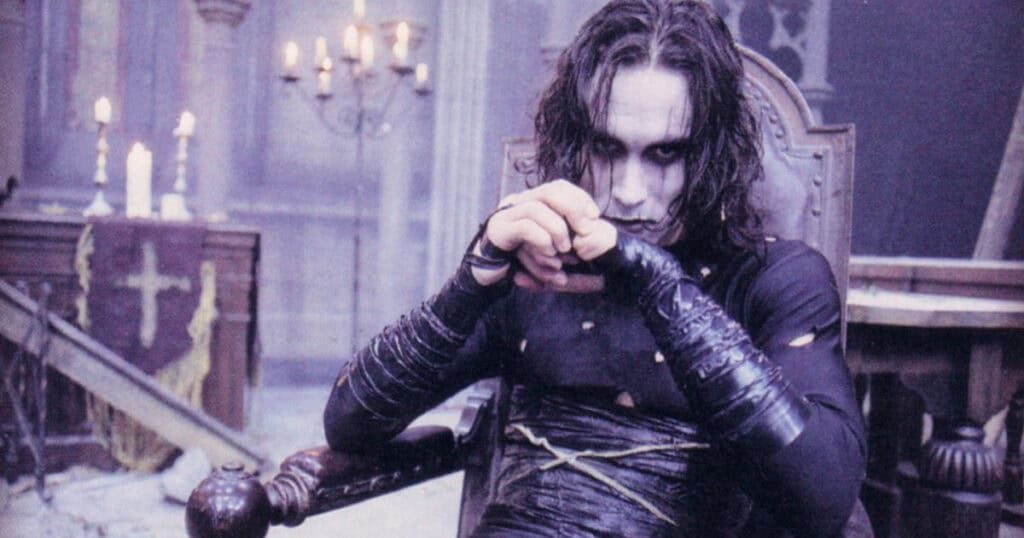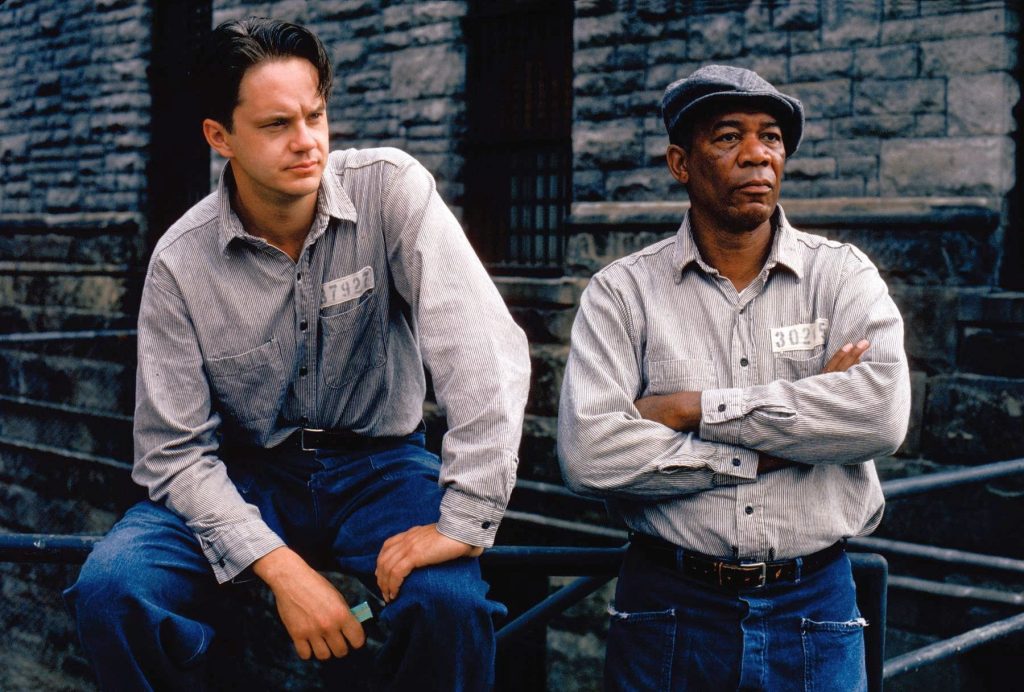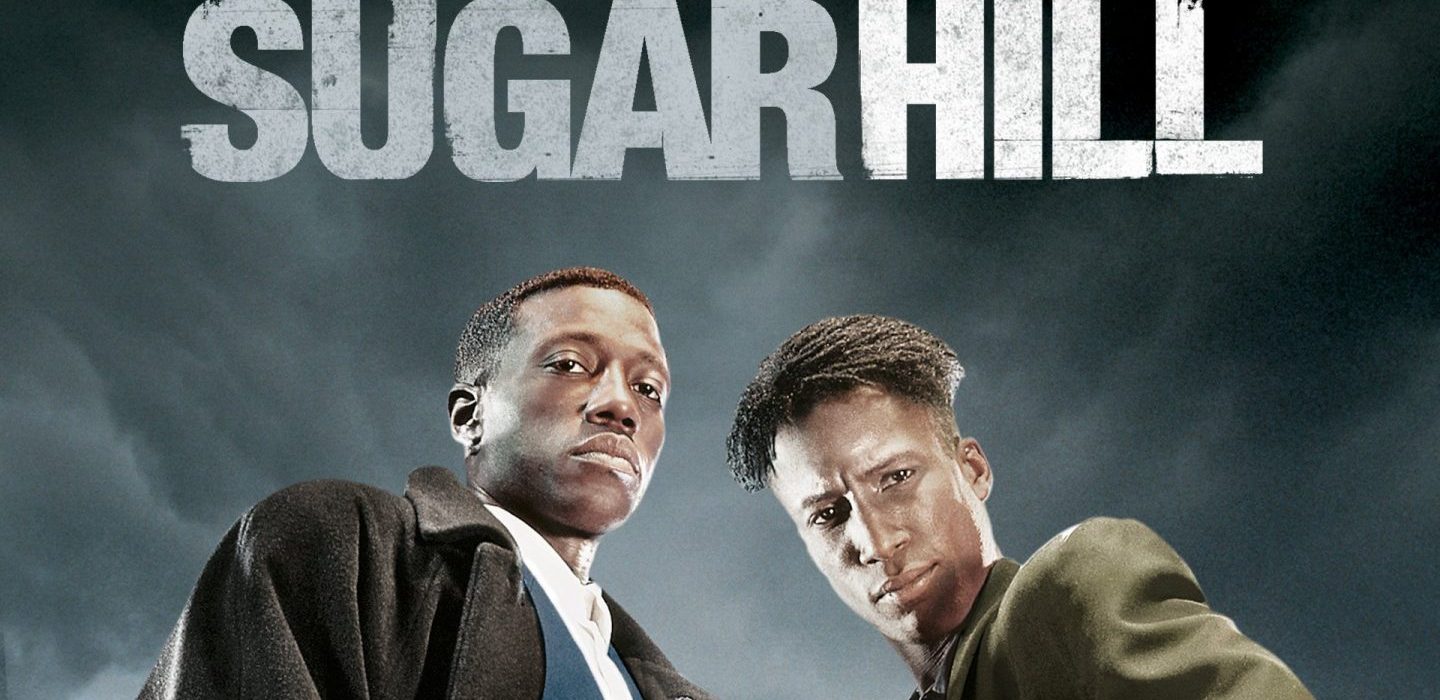- 1994 Was A Very Good Year For Film & Television (Part 1)
- 1994 Was A Very Good Year For Film & Television (Part 2)
Crime & Punishment
Crime was a huge problem in the 90s. The Violent Crime Control and Law Enforcement Act of 1994 attempted to address the rise of crime by throwing tons of money at the problem. Although world events were fairly calm, most in America were railing against the seemingly uncontrolled mayhem in the streets.
Like in the 70s, Hollywood responded with many crime-based films in 1994.
The Last Seduction, Leon The Professional, Natural Born Killers, and more reflected the fears and stresses. Sugar Hill, part II of Barry Michael Cooper’s Harlem Trilogy revealed a tough and gritty in-your-face style of crime film that was popularized in 1994.
From the screenplay of Natural Born Killers:
INT. DINER – DAY
Sonny gurgles out a laugh.
SONNY
Hey, I think she’s sweet on you.
Otis turns to Mallory as she punches him hard in the
face, spinning him around.
Sonny spews a mouthful of Highlife.
Mallory grabs the back of Otis’s head and smashes it
down on the table, cracking the linoleum.
Otis buckles, dropping to his knees.
Sonny jumps off the counter stool, but Mickey’s hand
clutches hold of his shoulder.
Sonny spins around toward Mickey, loaded for bear,
and points his finger at him, threateningly.
Before any threat can be made, Mickey whips a large
buck knife out from its sheath, and in a flash, slices
off Sonny’s finger.
Sonny’s finger drops on his boot. He grabs his aching
hand. Blood flows from the wound.
MICKEY
Just because my woman’s mopping up
the floor with your buddy is no
reason for you to join in.
Mickey makes five lightning quick slashing swings. The
buck knife slips back into its sheath. At first, there
seems to be no difference with Sonny. Finally, blood
flows from the slices made in his face and chest. Sonny
collapses.
Happy Endings
Stressful times always bring out both a reflection of those times and a repudiation of what we live with.
Preston Sturges’ Sullivan’s Travels (1942) details a film director who won’t do a comedy because he says people are too worried about their lives to laugh. He hits the road as a hobo to support his findings and discovers he’s wrong. People love to laugh, to forget their worries for a short time and just enjoy themselves.
Although there was a lot of hope in abundance in 1994, Bill Clinton ran on an “It’s the Economy Stupid” slogan (only semi-seriously) to defeat George H. W. Bush in the election. The country was emerging from a deep recession, and even with better days on the horizon, people still were profoundly frightened about their financial health.
So we laughed.
Ace Ventura: Pet Detective, Dumb and Dumber, The Mask, True Lies, Clerks – over one hundred comedy or dramedy films flooded the box office in 1994 and made people forget their woes.

Jim Carey as Ace Ventura. Photo courtesy of Warner Bros.
What We Didn’t See
It seems impossible now, but comic book movies were not a thing in 1994. Why? Previous attempts (except for Superman (1978-1987) and The Crow (1994)) had failed to chart and although the technology that makes these movies possible was coming, it still wasn’t good enough to deliver on some of the amazing effects we see today.

Brandon Lee as Eric Draven in The Crow. Photo courtesy of Dimension Films. Miramax
Alex Proyas The Crow had be finished by animators and camera tricks after he was tragically killed on the set during a stunt gone wrong. And only very dark images were used to fill in the blanks because the tech was so raw. People loved Superman, but being one of the most iconic superheros of the time made that success mostly a one off. Almost all the effects in both films were ‘practical effects’ meaning actual ropes, pulleys, chains, and explosions. CGI does all the now for the most part but in 1994 computers were slow, expensive, and required teams of programmers to do anything like a special effect.
Apple was selling Power Macs and PCs were running Windows 3.1 or if you were lucky Windows NT. The computers that special effects companies used, like George Lucas’ Industrial Light and Magic, were custom built models and few and far between as far as availability was concerned.
The Mask which featured Jim Carey as a maniacal character was mostly done with sleight of camera and rotoscoping-like techniques. It cost $23 million to make ($48 million in today’s dollars), so not cheap to do.
Animated Gems
Animation seems bulletproof today but in 1994 only The Lion King made a box office splash. Again, because of (the lack of) technology traditional methods of doing animation, one hand-drawn cel at a time and 24 frames per second were still in place.
Given this, an animated film could take more than two years to make and in 1992 everyone was economically straddled. Film companies just weren’t willing to dump millions into and tie up production teams with an animated piece.
Sure, some animation was around but it wasn’t until The Lion King made the ticket windows roar (so to speak) that other companies got involved.
Dreamworks, 20th Century Animation, Fox Animation Studios, Warner Bros. Feature Animation, Sony Animation, Cartoon Network Studios and a slew of foreign studios all were founded or got into the animation business big time after seeing the overwhelming response to just one movie from Disney.
As it sits, that film still holds the record for highest grossing animated film over thirty years later.
No Social Media
We don’t know a world without social media anymore. We rely on many apps and platforms to deliver cultural and political news and experiences. In 1994 Netscape Navigator was just releasing its first Internet browser and it had nothing like Facebook, TikTok or even a Google search app.
I remember standing in the offices of Cinetel Films waiting for my meeting with Catalaine Knell and hearing that “Juice was on the loose” from one of the interns. O.J. Simpson’s white Bronco chase became infamous, but only on radio and television. Like everyone else, I had to wait to find a TV or radio to be further informed. I had a cell phone but that’s all it was – a phone. No browser or news app.
How amazing the films of 1994 must have been when there was no ‘viral’ then – at least in the way we understand it today. We watched Siskel and Ebert to get the 411 on films. Bought books – actual paper books or newspapers – to read summaries of films.

Andy Dufresne (Tim Robbins) & Ellis Boyd Redding (Morgan Freeman) in The Shawshank Redemption. Photo courtesy of Warner Bros.
Here’s an excerpt from Roger Ebert’s review of The Shawshank Redemption:
“The movie is as deliberate, considered and thoughtful as Freeman’s narration. There’s a feeling in Hollywood that audiences have short attention spans and must be assaulted with fresh novelties. I think such movies are slower to sit through than a film like “Shawshank,” which absorbs us and takes away the awareness that we are watching a film. “
The entire review is about two thousand words and as one of the premier reviewers of the time, his take was positive enough to get people to want to watch it.
I enthusiastically relish the ability to look something up online on the spot. I’m hitting that tech dozens of times a day. It’s made my life as a writer (and teacher (and know-it-all)) so much easier. But what have we lost in the deal?
Is instant better when a movie (or TV) review is retweeted and tens of thousands of people instantly knee jerk their responses to something they’ve never seen? In 1994 film (and TV) had a puncher’s chance to find their audiences. Not so today. How many times has a streamer released a ‘dog’ that crashed and burned at the box office, and we discover on our streamer channels that it’s not so bad after all? Not really the horrible misstep an X review made it out to be.
We regurgitate information so quickly that it’s a minor miracle any film becomes a hit today. Not so in 1994 when information was slower and there weren’t a thousand outlets of entertainment. Things got increasingly more complex after that so 1994 may be the beginning and end of an era.
The Greatest Year?
Would you pick 1994 as the greatest year in movie history? Many have, no doubt not only for the quality of the films produced, but the insane box office records set during that time. As mentioned, nine movies with over $100 million in box office, some of which still haven’t been surpassed thirty years later.
Amazing.
There are watershed years and decades for films. 1994 must be one of them.

